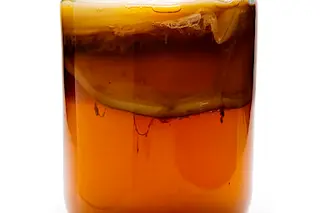A national chain restaurant once approached McCormick & Company because it wasn’t getting the kind of fajitas sell-through it expected. When VP of applied research Marianne Gillette and her colleagues visited the restaurant, they observed the ritual of the fajita moment: An awe-struck silence would sweep across the dining room as a waiter carried a sizzling fajita skillet to some lucky table. They went back to the office and brainstormed. How can we make this moment even more dramatic? They created a “sizzle sauce,” which made the sizzle louder and the aroma more intense. Sales spiked. McCormick once made a cedar-plank flavor for a restaurant that didn’t want the bother of cooking salmon on actual cedar planks. Using the same technology it used to create the imitation vanilla, McCormick has created “Ultimate Lemon,” which was formulated using aroma chemicals found in lemon peel, Meyer lemon, lemon thyme, and Limoncello (a ...
This Laboratory Invents the Flavors in Nearly Everything You Eat
Discover how McCormick's sizzle sauce transforms dining experiences, enhancing flavors and boosting sales dramatically.
More on Discover
Stay Curious
SubscribeTo The Magazine
Save up to 40% off the cover price when you subscribe to Discover magazine.
Subscribe







